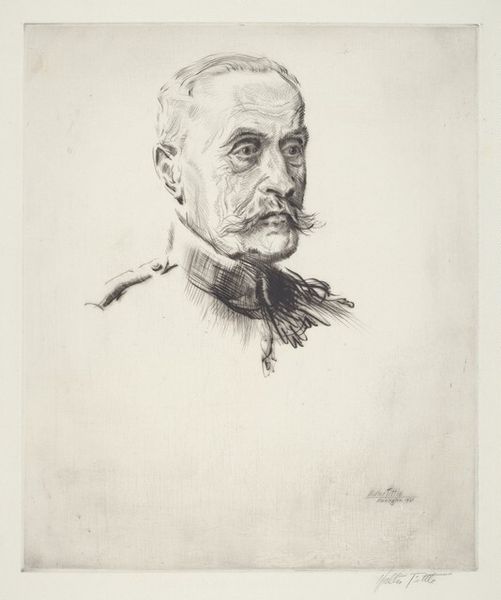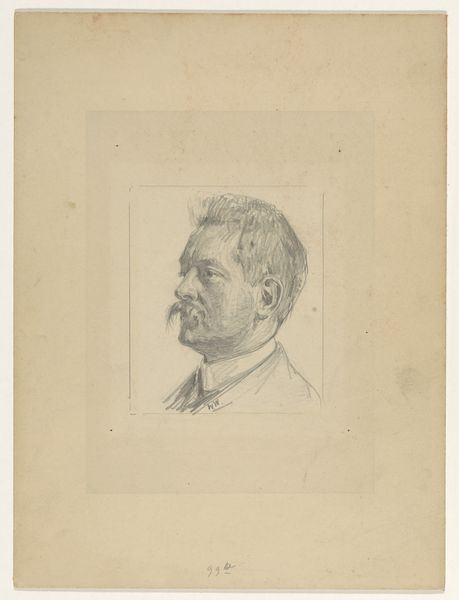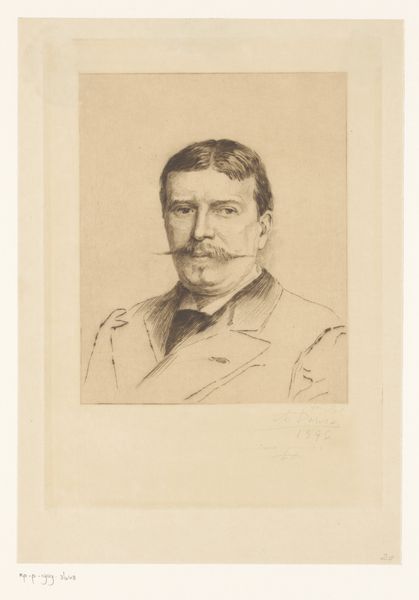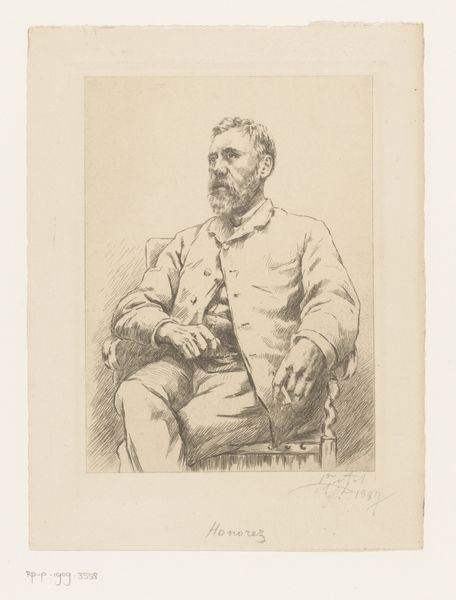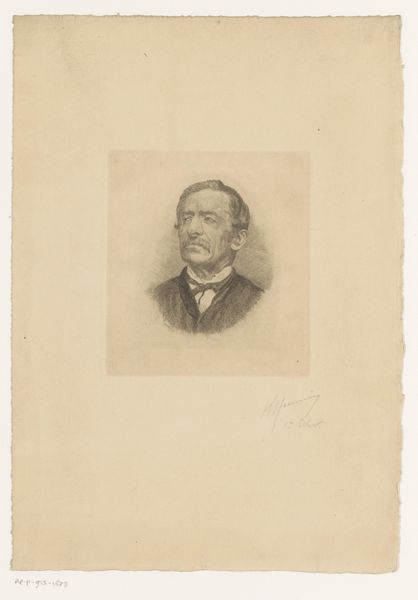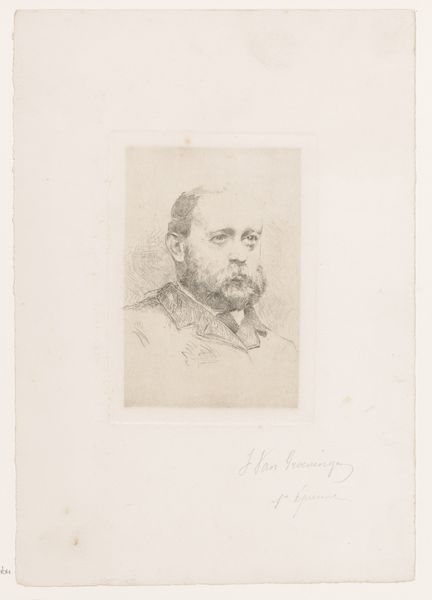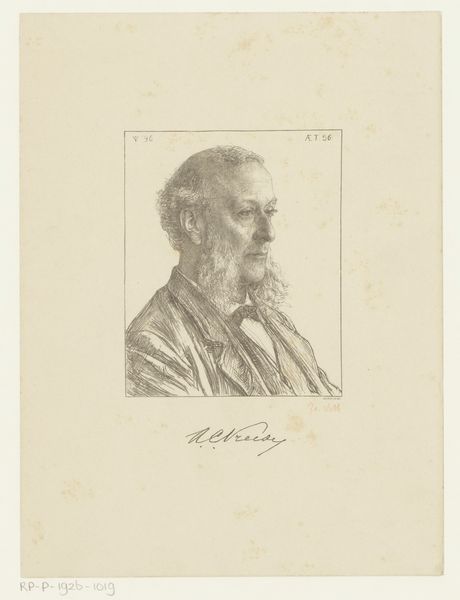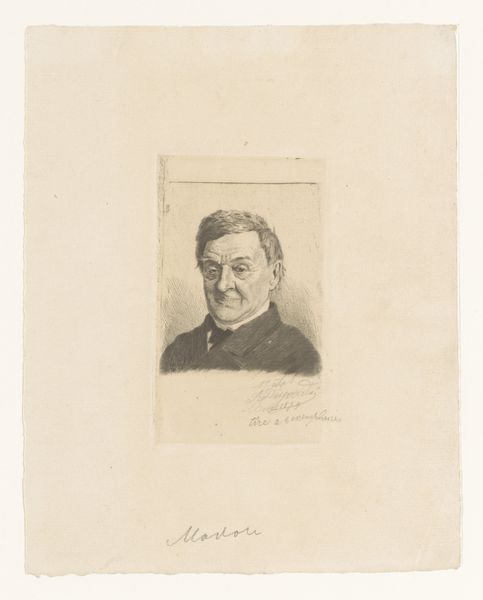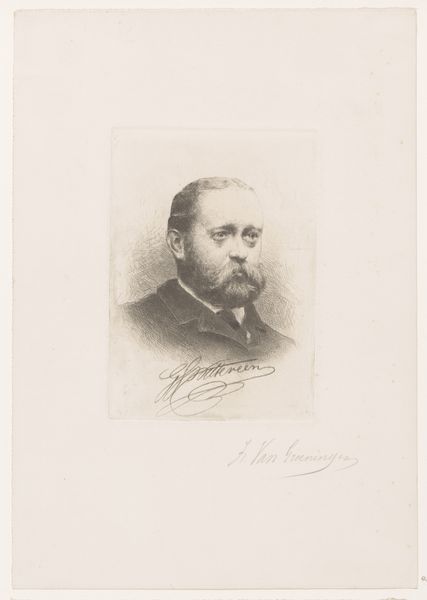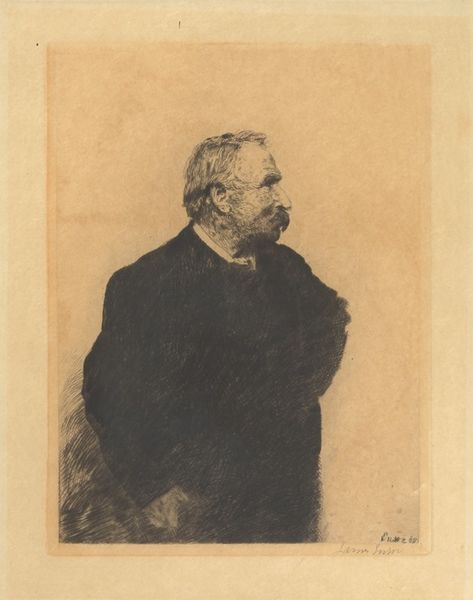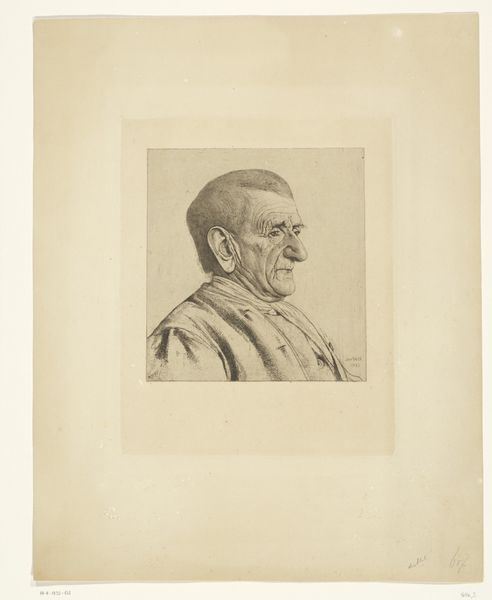
drawing, pencil
#
portrait
#
pencil drawn
#
drawing
#
pencil sketch
#
pencil drawing
#
pencil
#
realism
Dimensions: height 137 mm, width 86 mm
Copyright: Rijks Museum: Open Domain
Editor: This is Hans Weyl's 1898 pencil drawing, "Portret van Albert, koning van Saksen" – or "Portrait of Albert, King of Saxony." It's strikingly formal, yet the medium gives it an intimate feeling. I'm curious, what historical context informs your view of this work? Curator: The proliferation of royal portraits like this speaks volumes about the social and political landscape of late 19th-century Europe. How do you think images like this functioned within society? Were they mere representations, or did they actively participate in shaping perceptions of power and leadership? Editor: I suppose they were meant to reinforce Albert's authority, but maybe also to make him more relatable to his subjects through the simplicity of a drawing. Almost like propaganda? Curator: Precisely. Consider the institutional frameworks at play here – the role of royal patronage, the burgeoning art market, and the rise of illustrated publications. How did these systems contribute to the circulation and consumption of such images, influencing public opinion and legitimizing the monarchy? Weyl made also other very prominent depictions of leading personas in politics and culture – why this insistence on the elites of the day? Editor: Perhaps a way to align himself and his work with the powers that be, but also the interests of the public audience? So he gained notoriety through depicting the already notorious. Curator: Exactly, art is very rarely just “art,” divorced from everything around it. Understanding these relationships deepens our understanding. Thank you for those thoughts, your perspective made me also consider other underlying aspects of art production during the period.
Comments
No comments
Be the first to comment and join the conversation on the ultimate creative platform.
